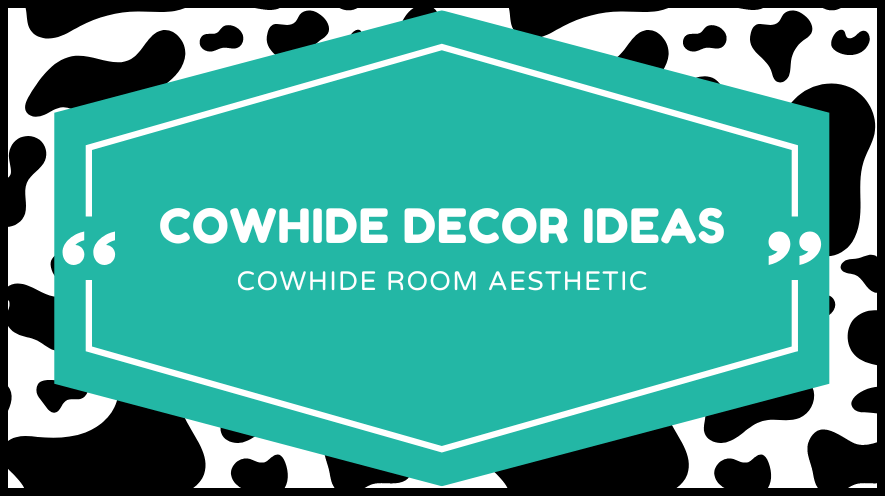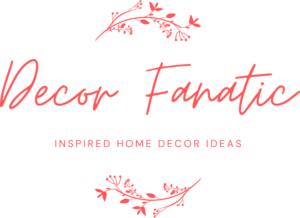Cowhide works as an element in many decorating themes from cabin to kitschy. The term cowhide means different things to different people but we’re using it as a décor term describing any cow-themed element, whether print or solid.
How do you use cowhide in your decor? You choose whether to use cowhide as an accent in your décor or as its theme. From there, you incorporate it into your room in the rugs, wall hangings, and furnishings. Let’s explore ideas for how to do this.
In This Article
Theme or Accent? How Will You Use Cowhide?
When you read the term cowhide theme, if you picture wall-to-wall white and black cow motif items, you pictured the kitschy extreme. That’s not what we mean. If you love those cow print-themed items though, you can work them into a larger motif that doesn’t overpower the senses with quirky Holsteins.
As an accent, you can add cowhide to any décor. It offers a soft, luxurious rug material that lasts long and cleans easily. If you own a leather jacket, you know how to clean a cowhide rug. Cowhide also makes snazzy lampshades and upholstery.
Cowhide Rugs
Use a cowhide rug in any spot in a room to which you want to draw attention. They make an ideal throw rug in front of the fireplace or under the couch and coffee table. When anyone stands up from the couch, they’ll feel the softness of suede beneath their feet. That’s the texture of a cowhide rug.
Just like other rugs, they come in various sizes from room rugs to accent rugs and runners. Used in an area rug size, they work well as an accent in any room.
Cowhide as a Wall Hanging
A cowhide rug also works wonderfully as a wall hanging. It can stand alone or pair with other items, such as serving as a backdrop for a mirror or animal horns.
It also works well on the ceiling behind the fixture of a ceiling fan or chandelier. To do this, you’ll need to take down your light fixture temporarily and use a fitted cowhide with a center hole or one that laces shut. Adhere it to the ceiling, then replace the fixture. It will look as if the cowhide integrates into the ceiling.
Cowhide (or Faux Cowhide) Makes Lovely Furniture Throws
Choose a thinner cowhide that isn’t suited for use as a rug to use as a throw or purchase a throw made of cowhide. Drape it across a favorite armchair or across the back of a wood headboard to create depth and layer materials.
Use a medium-sized cowhide as a layer over a tablecloth on a formal dining table. Top it with a candelabra or cornucopia stuffed with fall fruits and gourds.
Since cows come in many colors, so do cowhides. A solid black or brown cowhide works best as a table covering while depending on the room, you could use a black and white or brown and white cowhide as a rug or wall hanging.
Cowhide as a Small Décor Accent
Salvage a worn cowhide or patchy rug by cutting it into small cowhide patches. Use these patches as a unique wallpaper element or ceiling accent.
Affix them to a mirror’s frame with craft glue to theme the mirror. This works best if the mirror uses a complementary base color. For example, a black and white cowhide matches well with a white frame or a black frame.
Using Cowhide Furnishings
Sure, your leather couch technically qualifies but we mean a furniture piece that’s obviously cow-themed. Think of a Cheval chair with a brown and white cowhide seat. Picture a loveseat in soft, supple brown cowhide. These furnishings function as a statement piece when used in a room that otherwise uses solid color pieces.
Cowhide graces the tops of tables, the cushions of bar stools, and lampshades of lamps. There’s really no place where you can’t use cowhide. It’s just a matter of using it judiciously.
Creating an Overall Theme of Cowhide
Here’s where people often run into trouble. Some folks choose only one cowhide, typically the chintzy white and black print, and go overboard with it. They put the cowhide on their floor, ceiling, furniture, knickknacks, and even use cowhide ceiling fan pulls. They buy matching cowhide drapes and paint the walls white. It is just too much.
Temper your use of any theme. Vary the cowhides within the same color family. For instance, use a black and white print cowhide lampshade with a solid black cowhide rug. That’s it for the cowhide.
That may not sound like enough to create a theme, but you round out the anchor pieces of a theme with related accents. The bull horns, for example, work in a cowhide theme.
Caveats to Cowhide Themes
Perhaps you’ve become an animal rights advocate, a vegetarian, or even a vegan. That does not mean that you need to give up the cowhide decorating theme that you love. That’s because faux cowhide offers the same look and a similar feel to the real thing.
Similar to pleather, a faux leather used in fashion, vegan leather creates the same look and feel, including the opulence of genuine leather. The faux cowhide used in high-quality rugs and upholstery looks just like the real thing but comes from a science lab instead of a cow or a bull.
Don’t fear cowhide as a décor theme. Embrace it as an accent or a décor.
Frequently Asked Questions
Additional Sources & Resources
• Cowhide: A Practical Guide to Tanning and Use, by Jenny Morgan: This book provides a comprehensive overview of cowhide, including its history, tanning process, use for clothing and furniture, and more.
• The Leatherworker’s Notebook: An Illustrated Guide to Working with Cowhide, by Todd Schueller: This book provides an in-depth look at working with cowhide, including tips and techniques for tooling, dyeing, coloring, and other leatherworking processes.
• The Craft of Working Cowhide: Techniques & Projects for the Home Leatherworker, by Marta O’Neill: This comprehensive guide covers everything from tanning to stitching, clamping, and dyeing.
• Art of Working Cowhide: Techniques for Tanning, Carving & Crafting Leather, by Robert Matthews: This book covers the basics of working with cowhide as well as more advanced techniques like carving and tooling.
•Cowhide in Design and Decoration, by Patricia Bayer: This book provides valuable insights into the use of cowhide in interior design and decoration, including furniture, wall coverings, sculptures, and more.
•Cowhide: A Contemporary Guide to Processing and Working Cowhide Leather, by Paul Renner: This book offers tips on tanning cowhide leather and working with it in various projects such as belts, bags, clothing, and more.
• Cowhide: An In-Depth Guide to Cowhide Leather and Its Uses in Fashion, by John Witherspoon: This book provides information about the various types of cowhide leather available and its uses for apparel, accessories, furniture, and decorative objects.
• The History of Cowhide, by Charles Hindman: This book details the history of cowhide and its use in fashion, decorating, and other uses throughout time.
• Working with Cowhide Leather: A Guide for Beginners, by Daniel Miller: This guide provides an introduction to working with cowhide leather for anyone interested in learning the basics and taking on projects.

